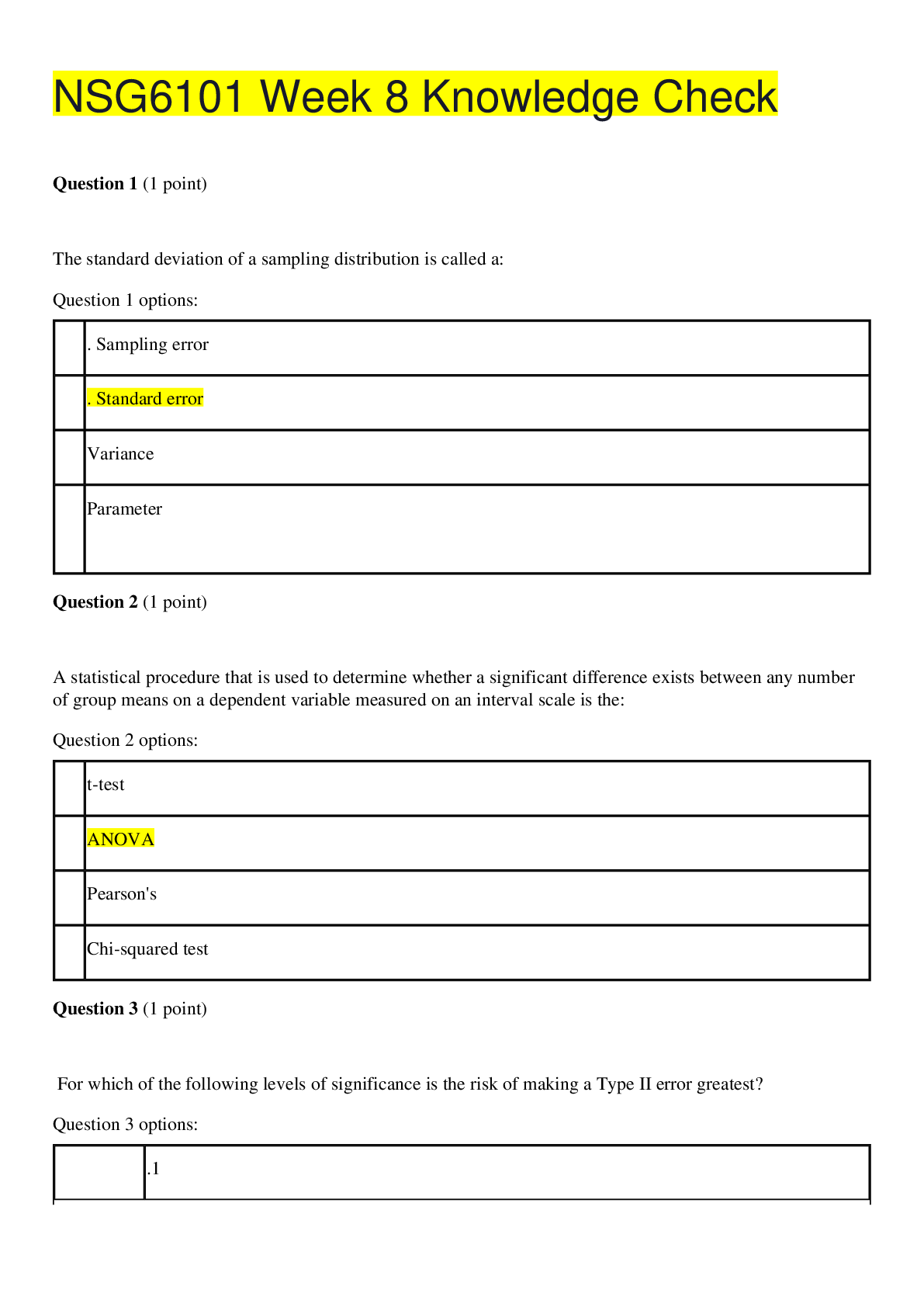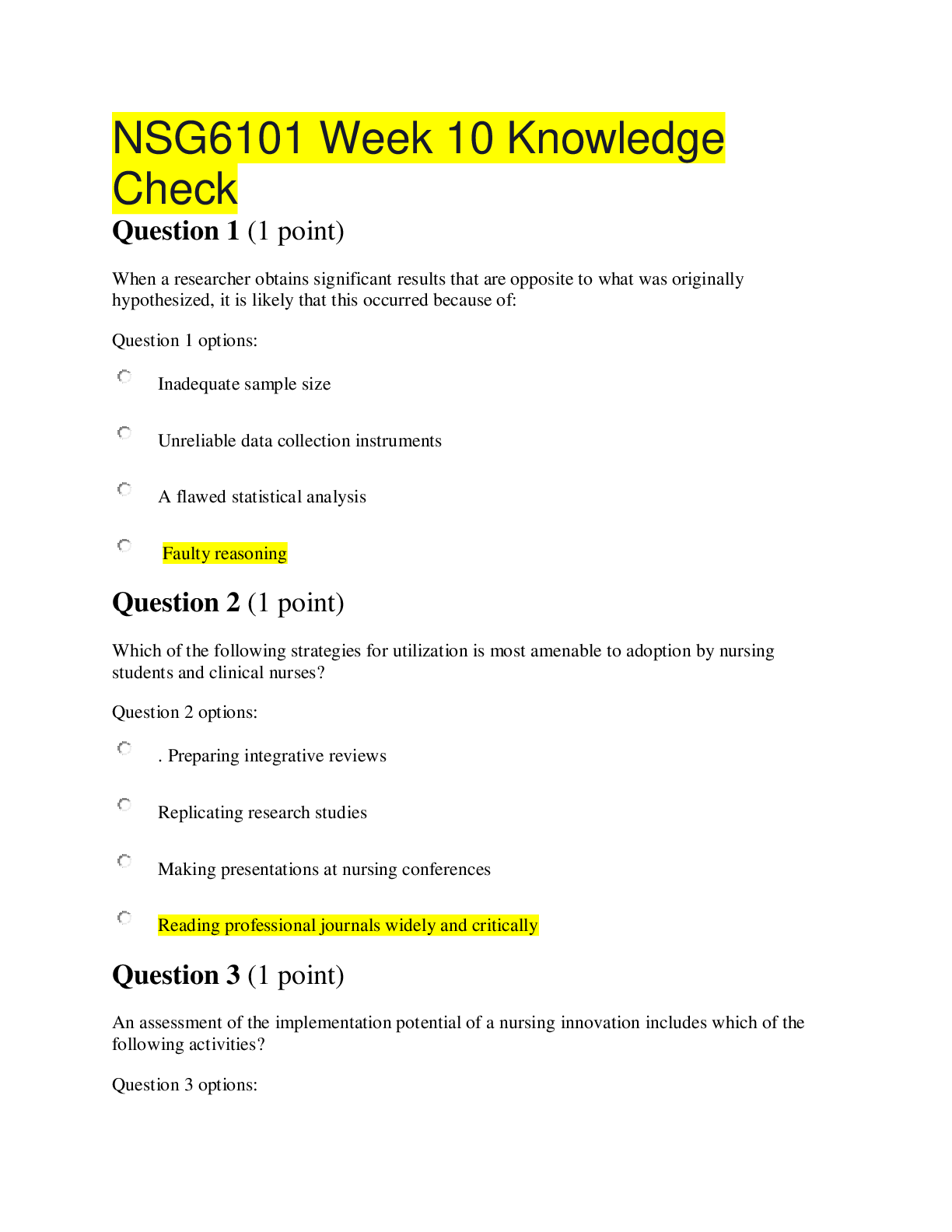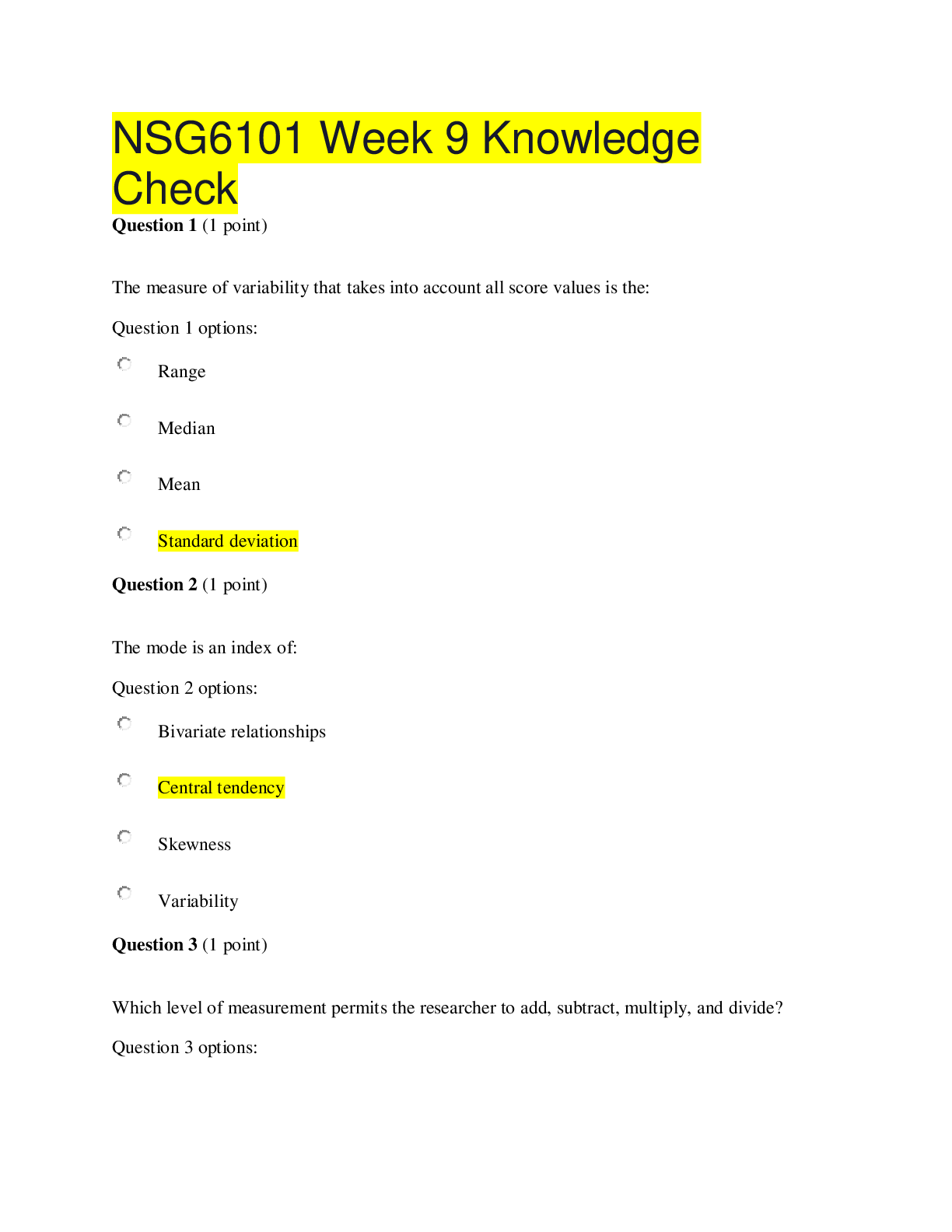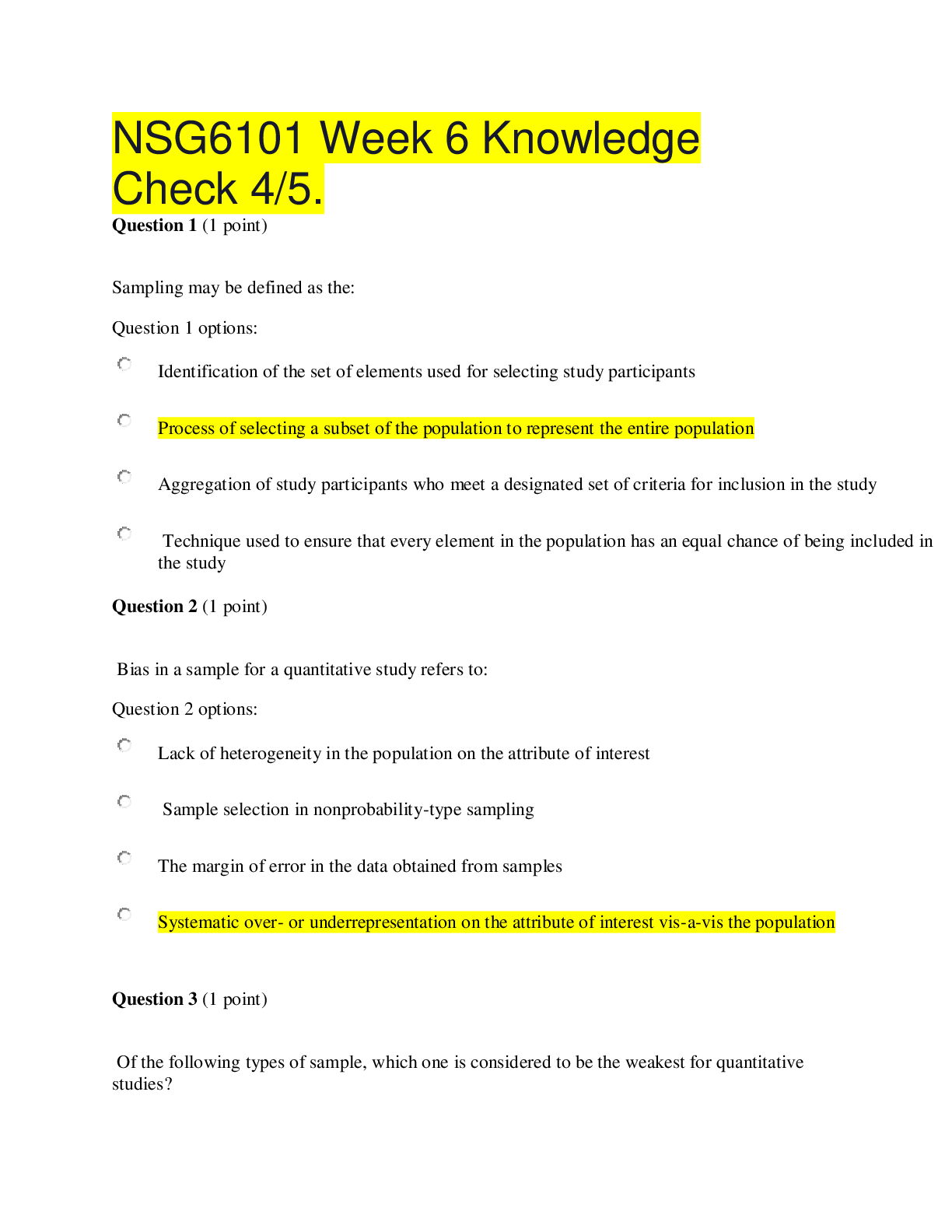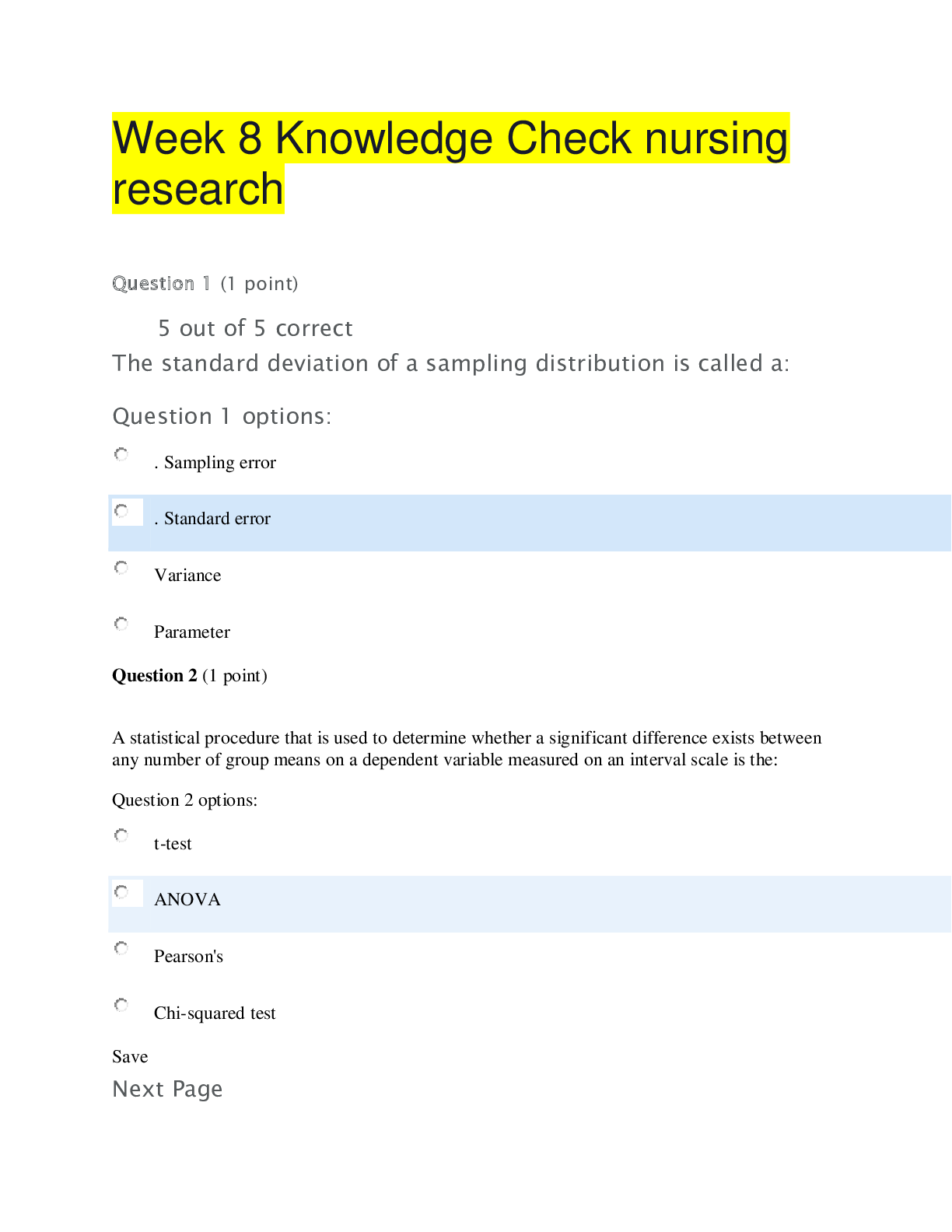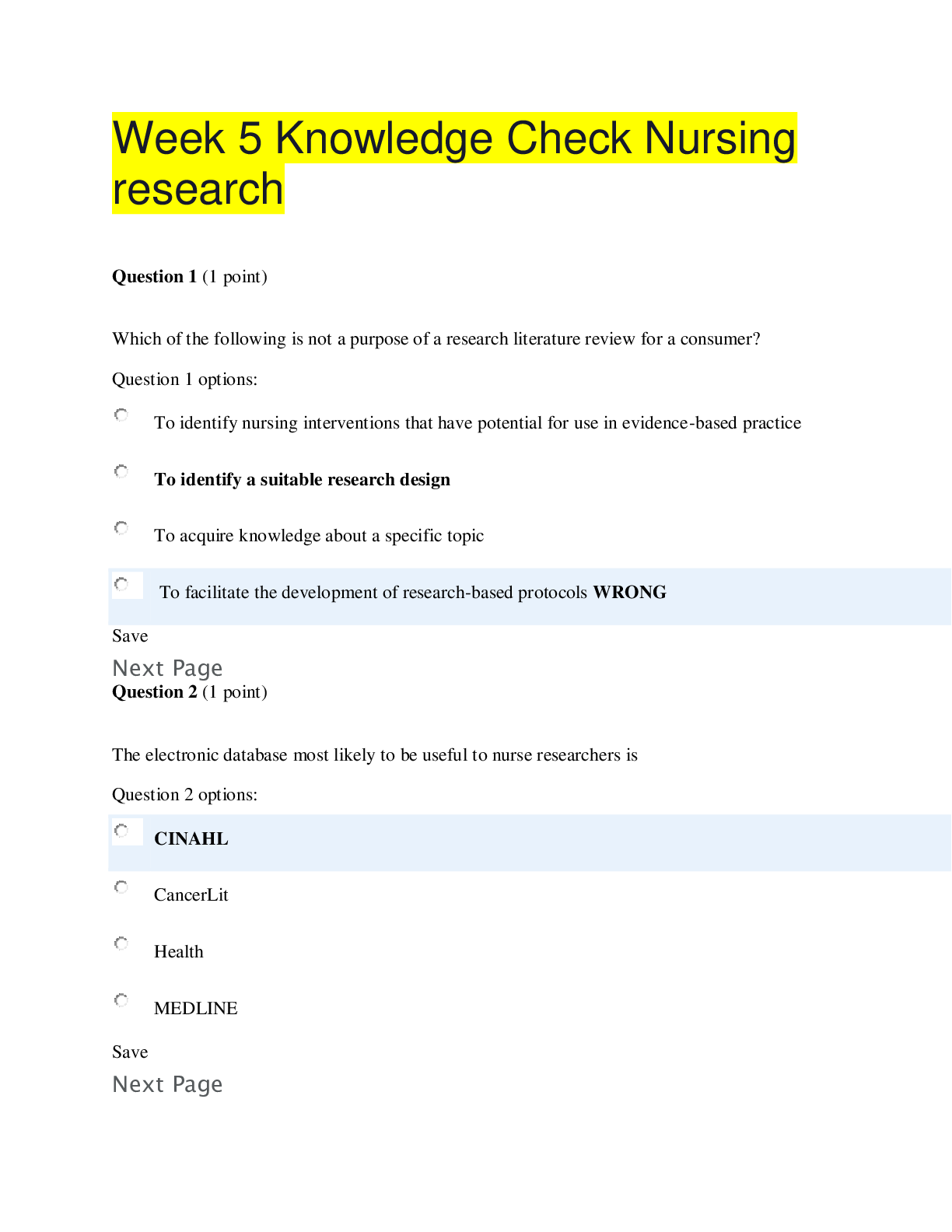*NURSING > STUDY GUIDE > SOUTH UNIVERSITY, SAVANNAH - NSG 6020 WEEK 4 CARDIAC STUDY GUIDE_100% CORRECT (All)
SOUTH UNIVERSITY, SAVANNAH - NSG 6020 WEEK 4 CARDIAC STUDY GUIDE_100% CORRECT
Document Content and Description Below
Week 4 Cardiac Study Guide What is responsible for the inspiratory splitting of S2? A 25-year-old optical technician comes to your clinic for evaluation of fatigue. As part of your physical examinat... ion, you listen to her heart and hear a murmur only at the cardiac apex. Which valve is most likely to be involved, based on the location of the murmur? You are conducting a workshop on the measurement of jugular venous pulsation. As part of your instruction, you tell the students to make sure that they can distinguish between the jugular venous pulsation and the carotid pulse. Which one of the following characteristics is typical of the carotid pulse? A 68-year-old mechanic presents to the emergency room for shortness of breath. You are concerned about a cardiac cause and measure his jugular venous pressure (JVP). It is elevated. Which one of the following conditions is a potential cause of elevated JVP? You are palpating the apical impulse in a patient with heart disease and find that the amplitude is diffuse and increased. Which of the following conditions could be a potential cause of an increase in the amplitude of the impulse? Which of the following events occurs at the start of diastole? Which is true of a third heart sound (S3)? Which is true of splitting of the second heart sound? In healthy adults over 20, how often should blood pressure, body mass index, waist circumference, and pulse be assessed, according to American Heart Association guidelines? Which of the following may be missed unless the patient is placed in the left lateral decubitus position and auscultated with the bell? You are listening carefully for S2 splitting. Which of the following will help? A patient comes to the emergency room for evaluation of shortness of breath. To which anatomic region would you assign the symptom? Patient presents for evaluation of a cough. Which of the following anatomic regions can be responsible for a cough? You are assessing a patient with joint pain and are trying to decide whether it is inflammatory or noninflammatory in nature. Which one of the following symptoms is consistent with an inflammatory process? A 19-year-old college sophomore comes to the clinic for evaluation of joint pains. The student has been back from spring break for 2 weeks; during her holiday, she went camping. She notes that she had a red spot, shaped like a target, but then it started spreading, and then the joint pains started. She used insect repellant but was in an area known to have ticks. She has never been sick and takes no medications routinely; she has never been sexually active. What is the most likely cause of her joint pain? A 28-year-old graduate student comes to your clinic for evaluation of pain “all over.” With further questioning, she is able to relate that the pain is worse in the neck, shoulders, hands, low back, and knees. She denies swelling in her joints; she states that the pain is worse in the morning; there is no limitation in her range of motion. On physical examination, she has several points on the muscles of the neck, shoulders, and back that are tender to palpation; muscle strength and range of motion are normal. Which of the following is likely the cause of her pain? A high school soccer player “blew out his knee” when the opposing goalie's head and shoulder struck his flexed knee while the goalie was diving for the ball. All of the following structures were involved in some way in his injury, but which of the following is actually an extra-articular structure? Louise, a 60-year-old, complains of left knee pain associated with tenderness throughout, redness, and warmth over the joint. Which of the following is least helpful in determining if a joint problem is inflammatory? An infant presents with a heart rate of 180, a respiratory rate of 68, and an enlarged liver. What diagnosis does this suggest? You are assessing an infant and notice that his nares flare, he has a soft grunt with each breath, and the skin between his ribs is pulled inward with inhalation. What is the significance of these findings? The nurse is participating in a health fair and performing cholesterol screens. One person has hypercholesterolemia. She is concerned about her risk for developing heart disease. Which of the following factors is used to estimate the 10-year risk of developing coronary heart disease? What life-threatening condition causes excess fluid in the pericardial cavity caused by blunt trauma, pericarditis, myocardial rupture? What are the radiological findings with severe left heart failure? What type of murmur is caused by mitral regurgitation? What type of murmur is caused by mitral stenosis? [Show More]
Last updated: 1 year ago
Preview 1 out of 4 pages
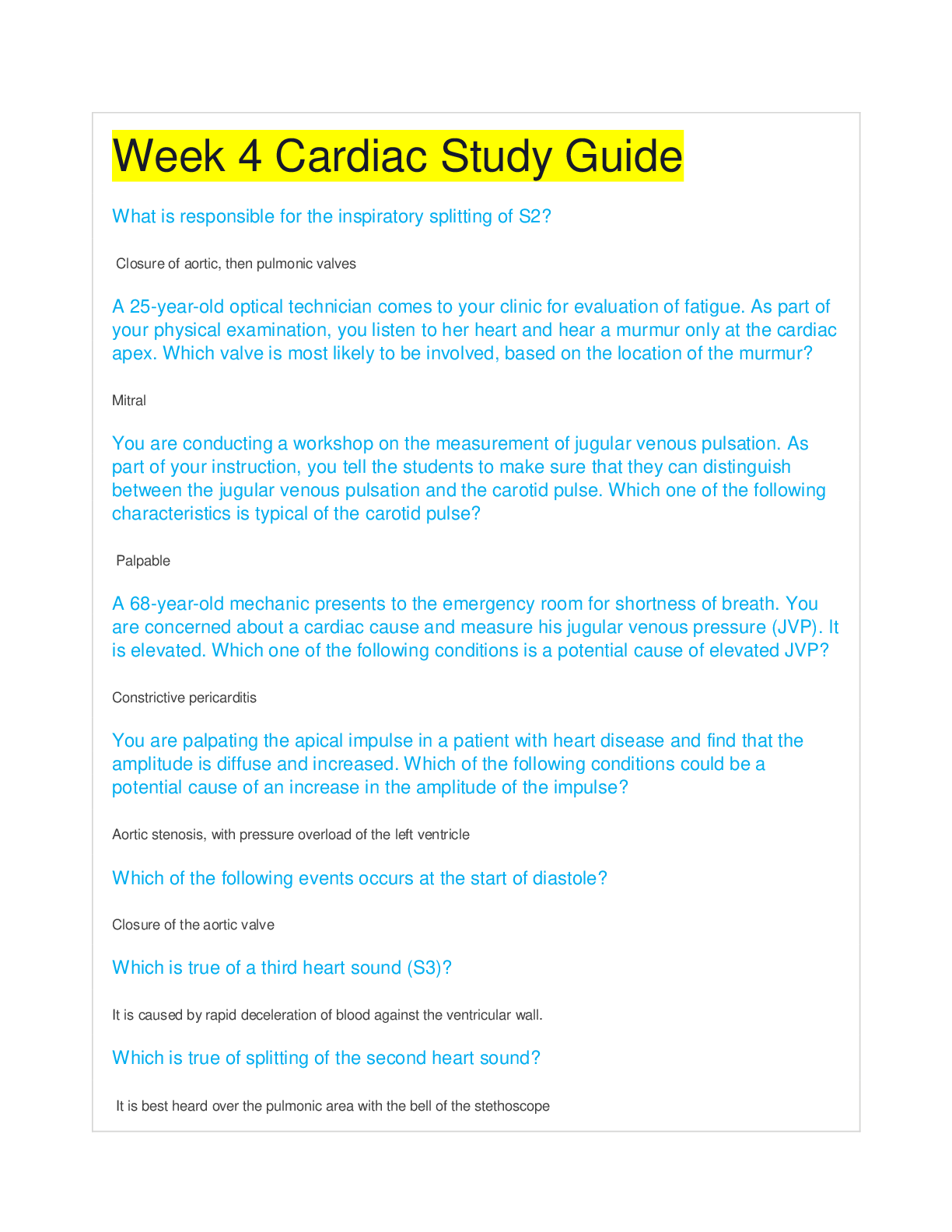
Reviews( 0 )
Document information
Connected school, study & course
About the document
Uploaded On
Jul 29, 2020
Number of pages
4
Written in
Additional information
This document has been written for:
Uploaded
Jul 29, 2020
Downloads
0
Views
39

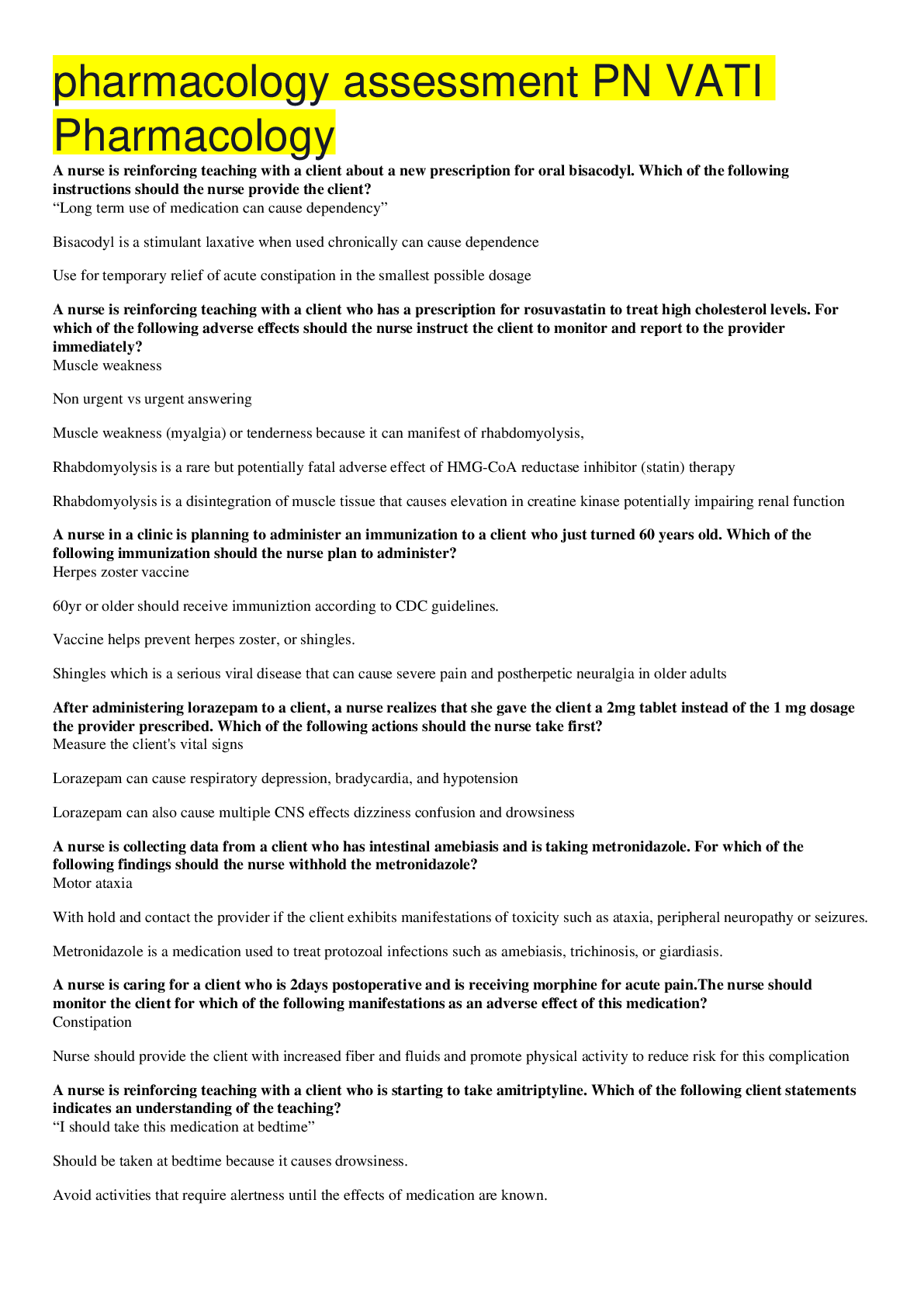


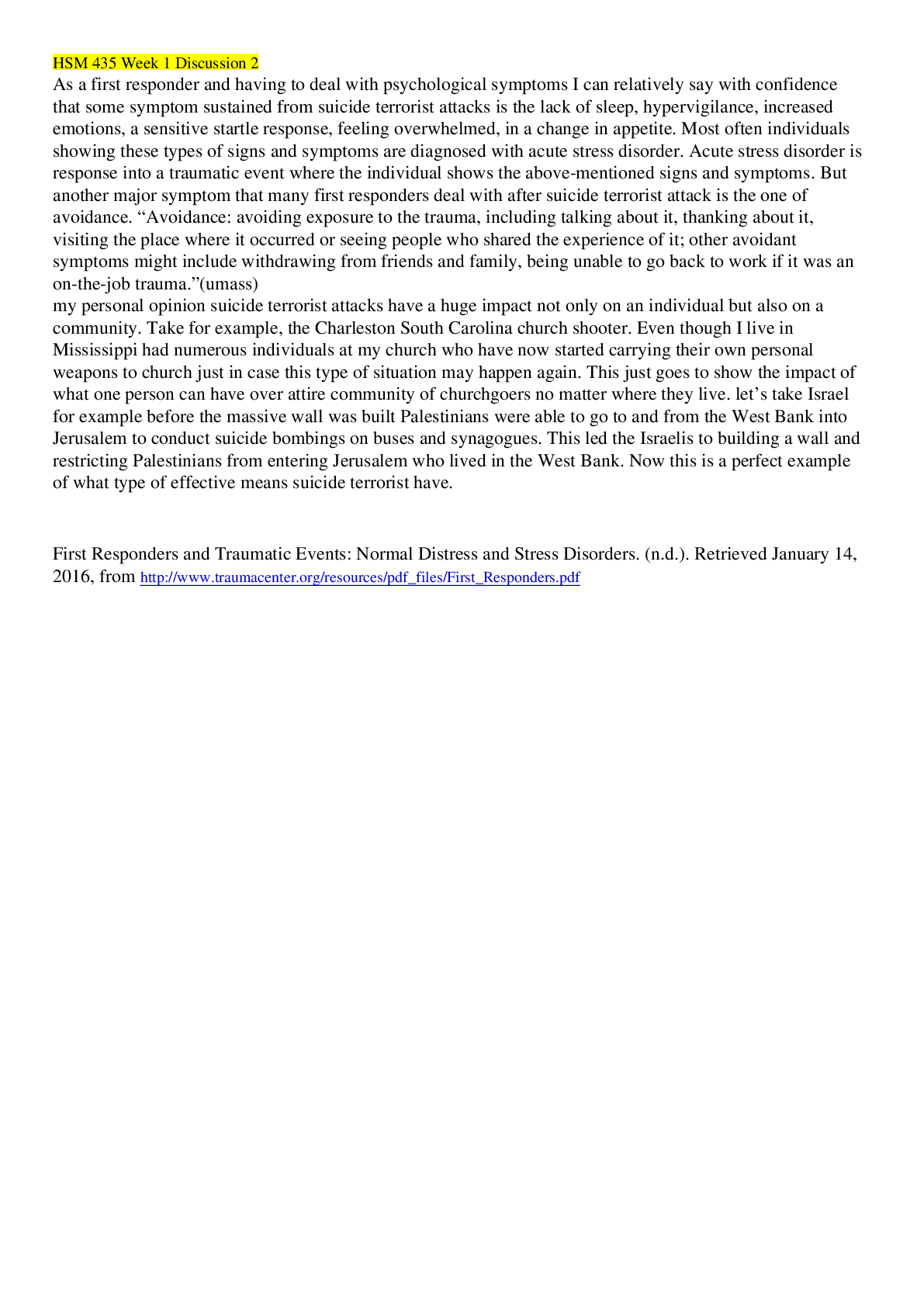


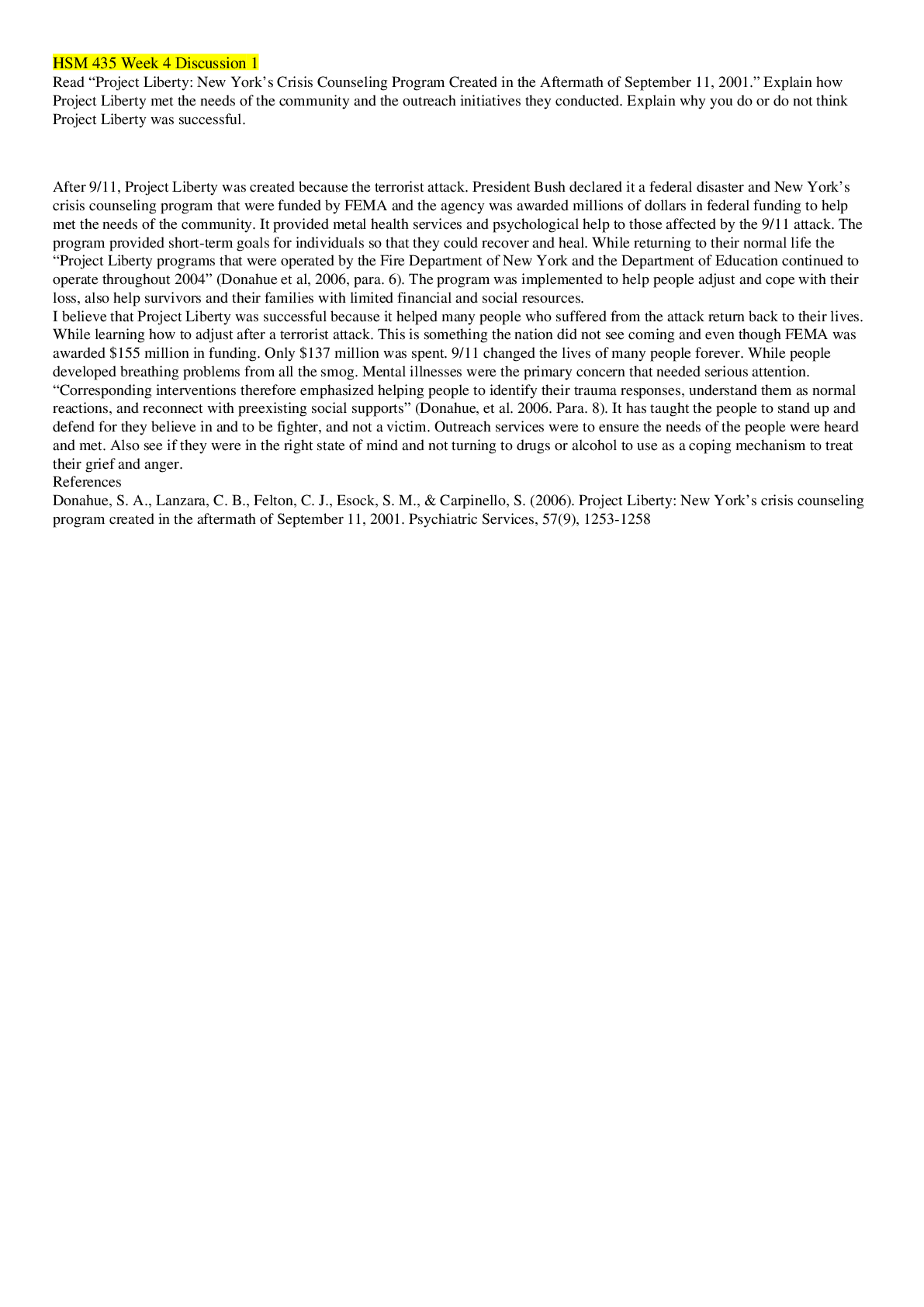
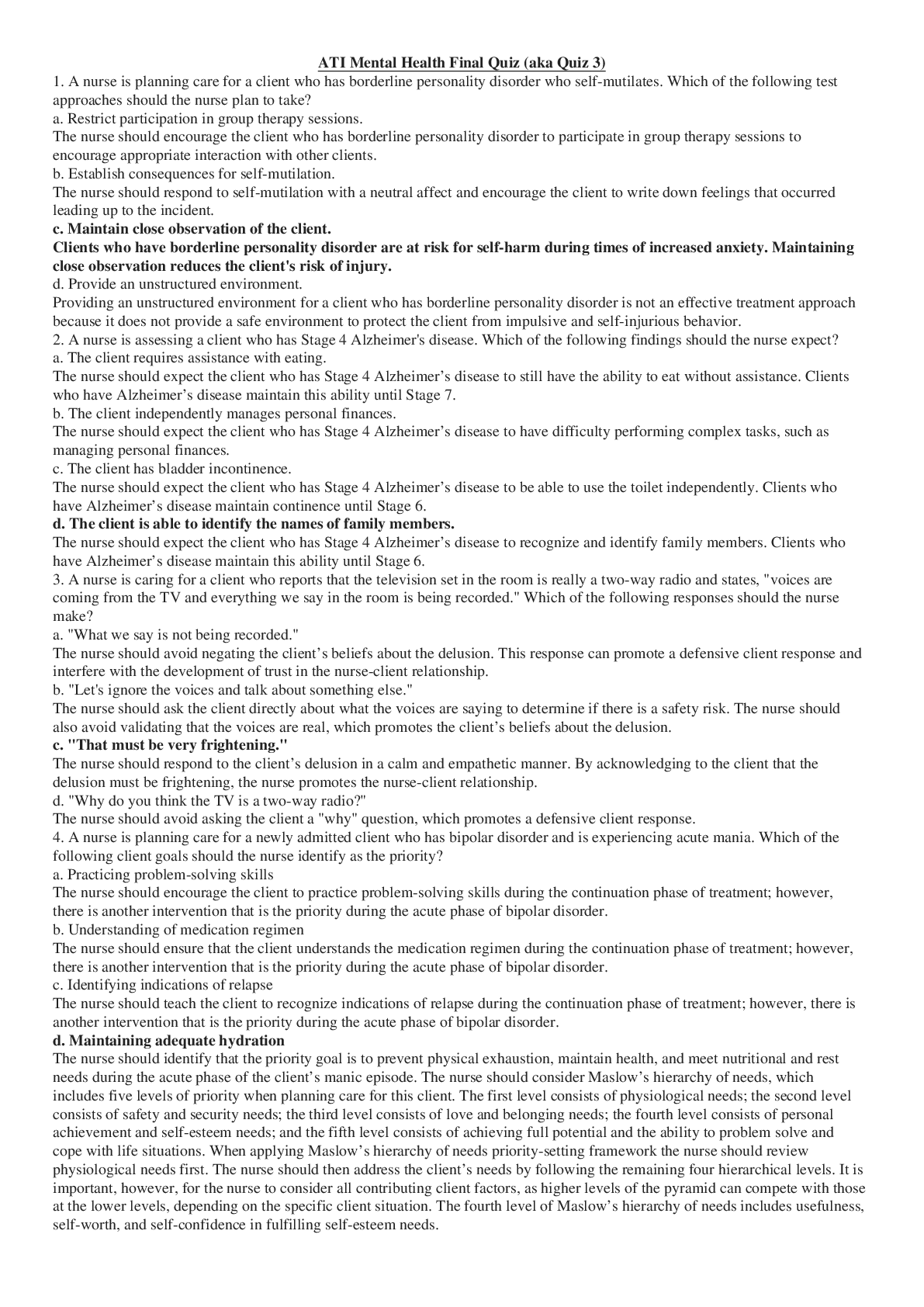

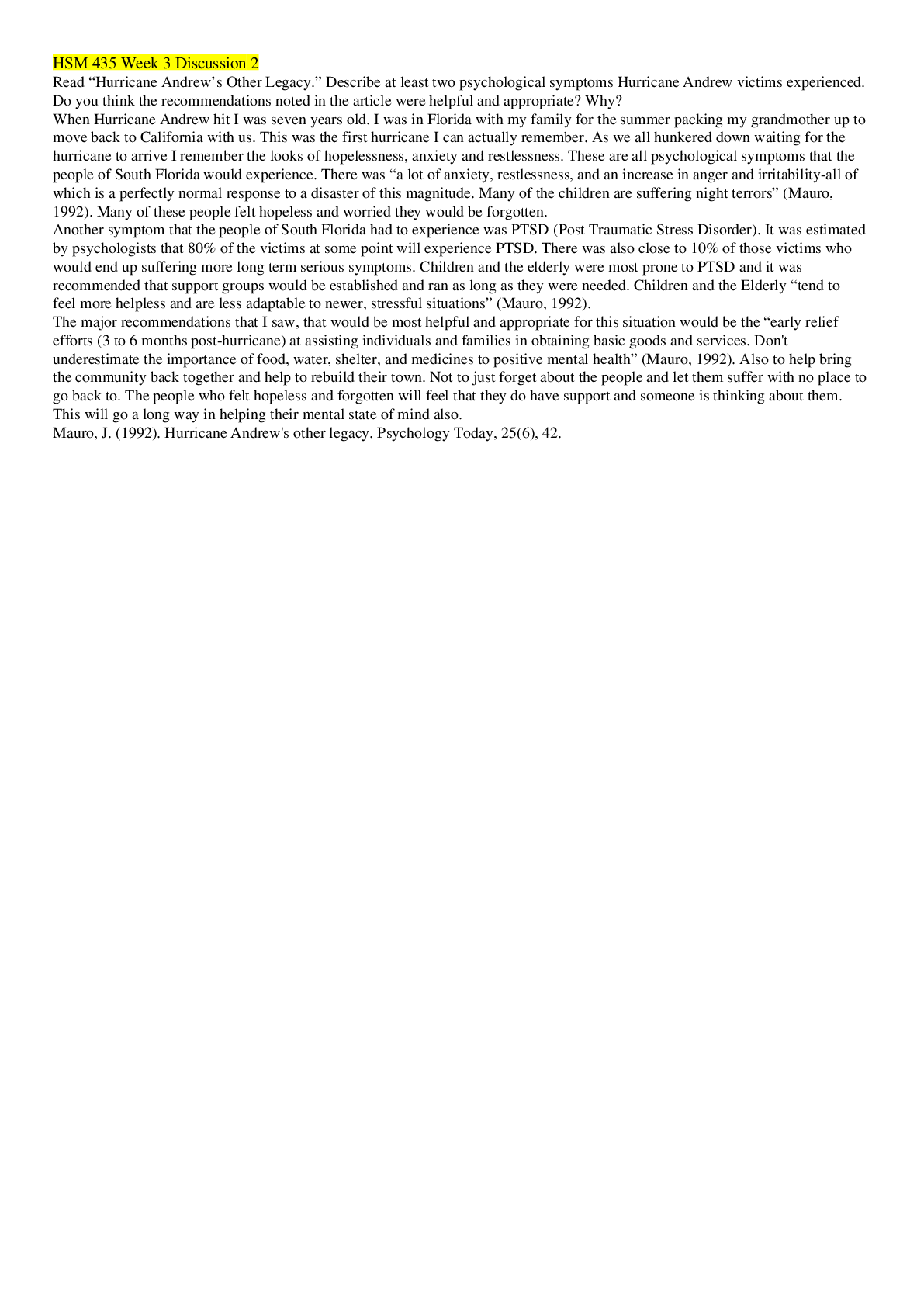

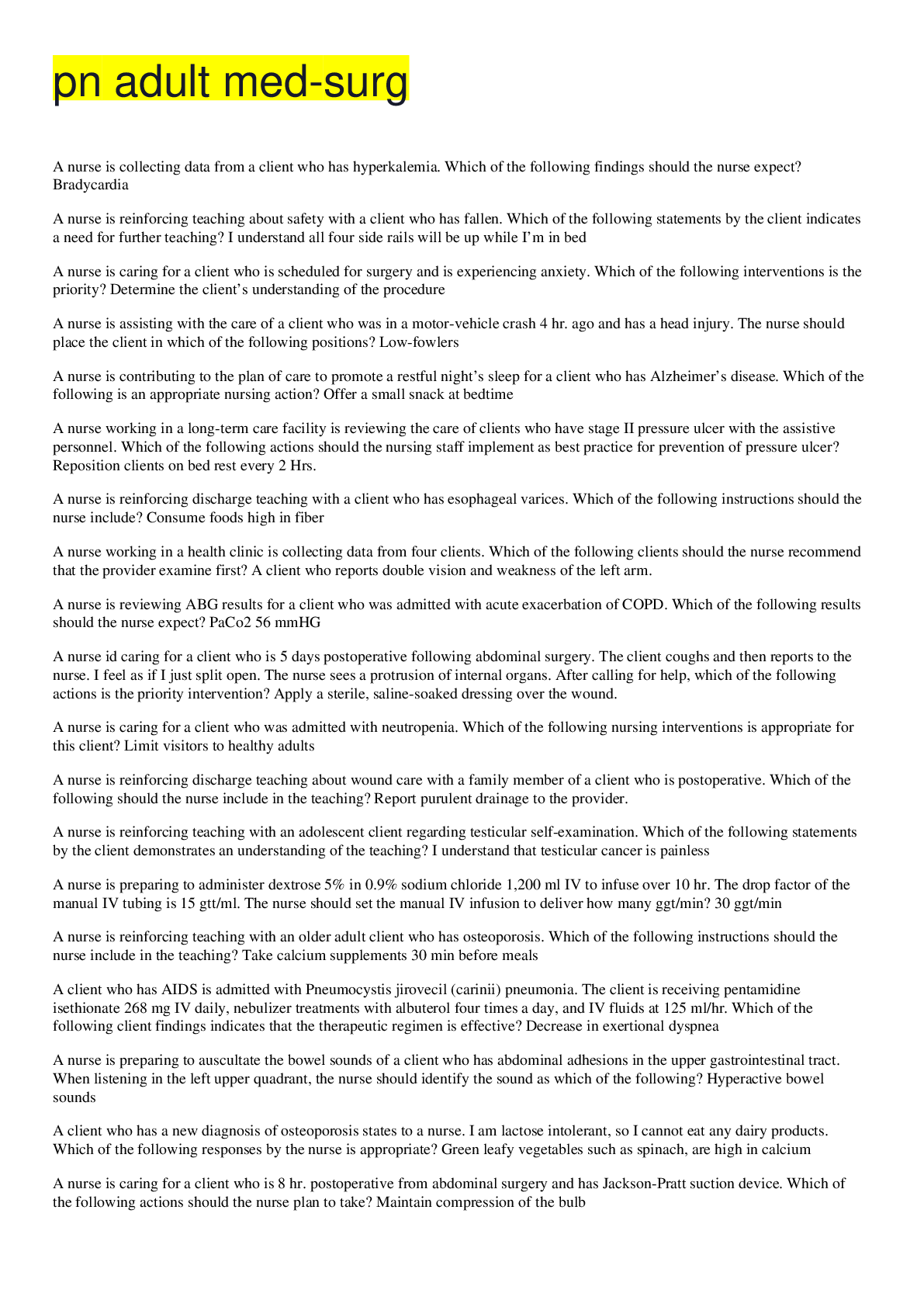
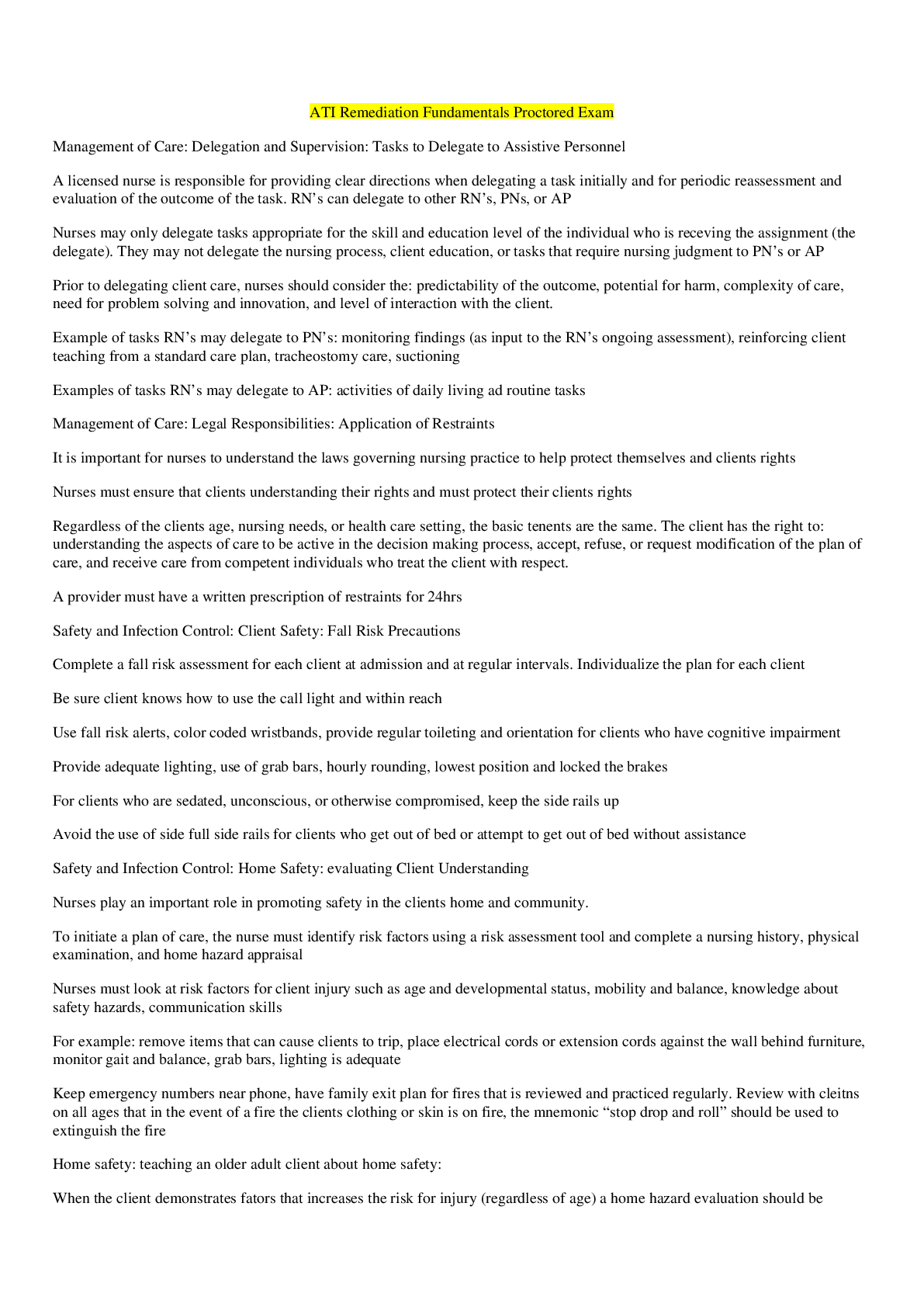

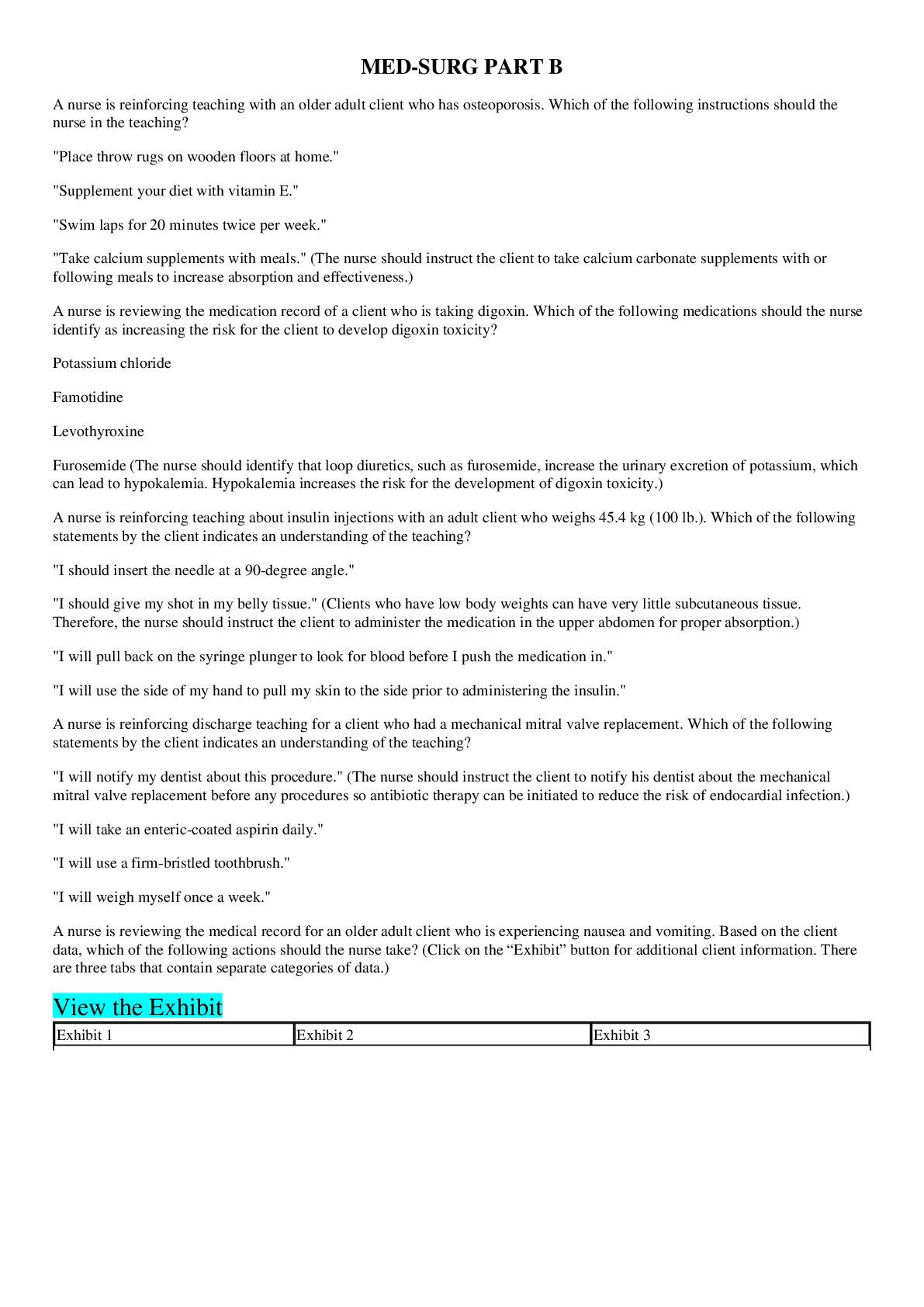
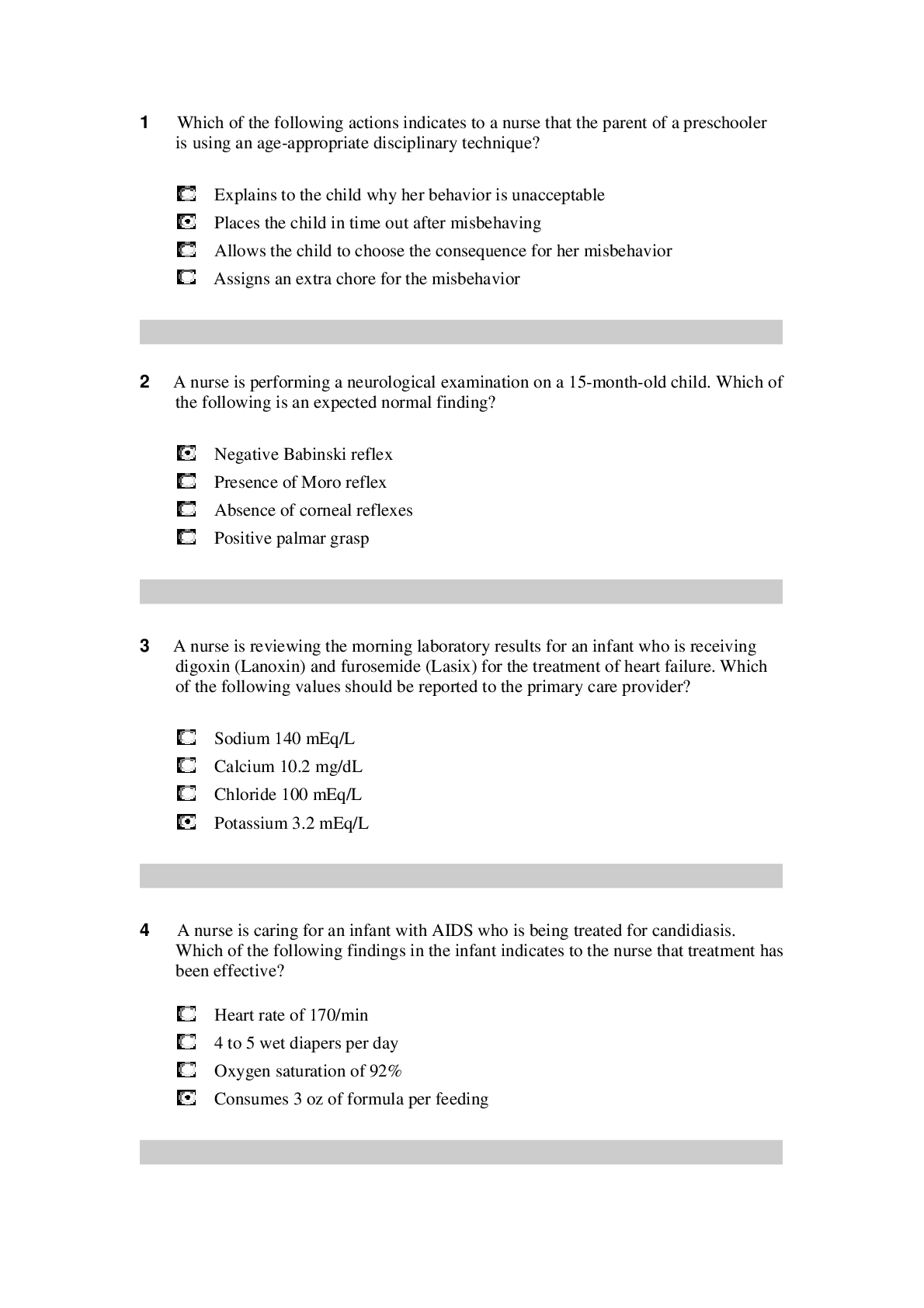
.png)
.png)
.png)

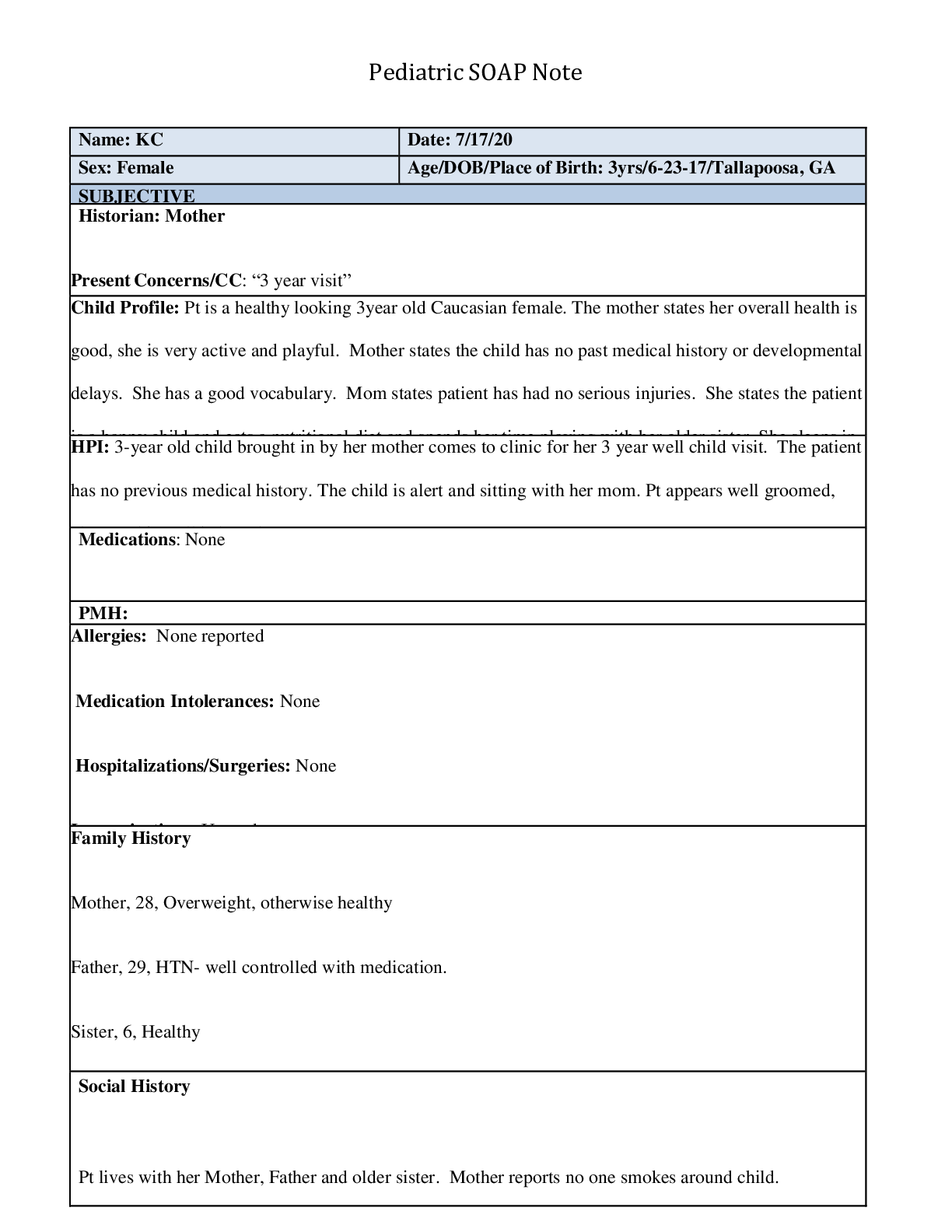
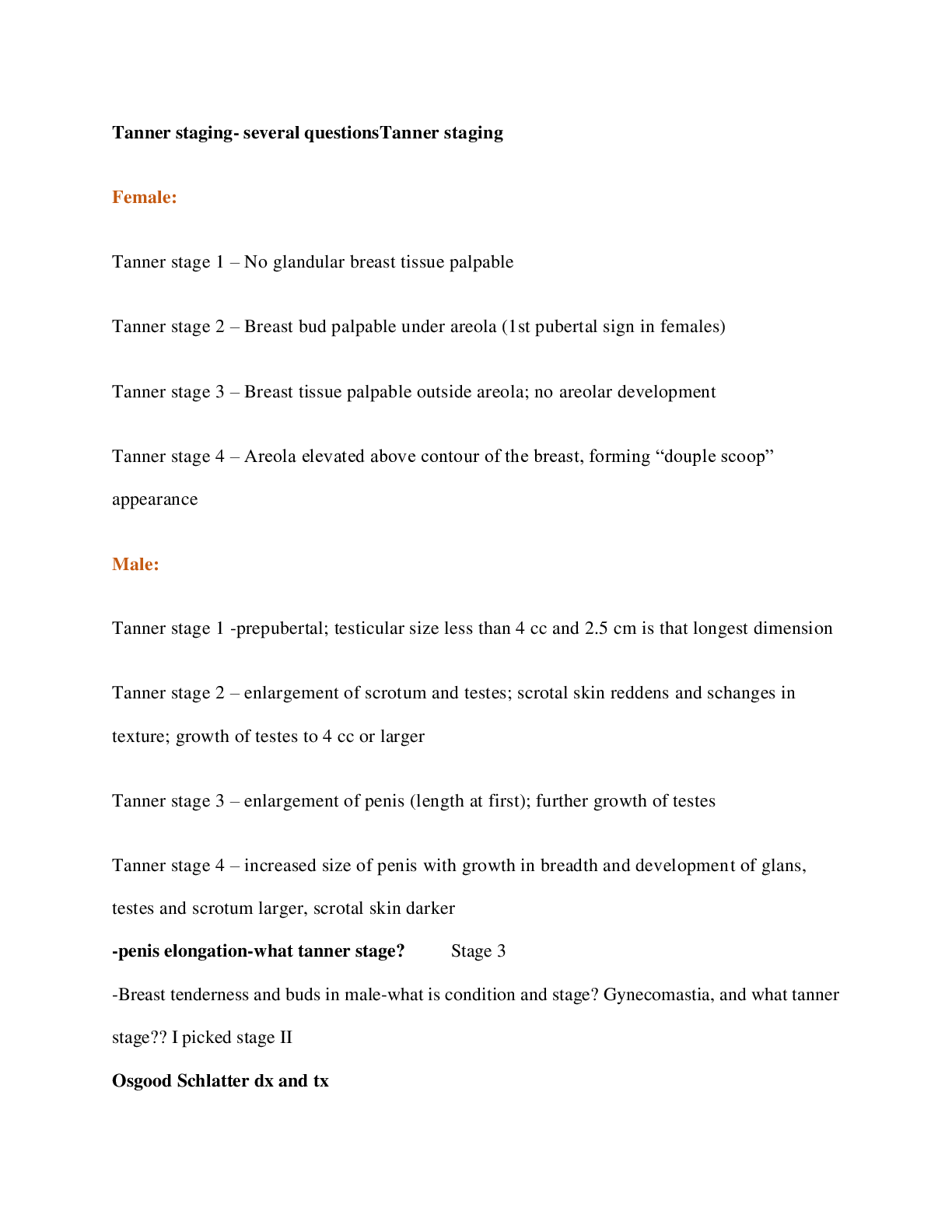

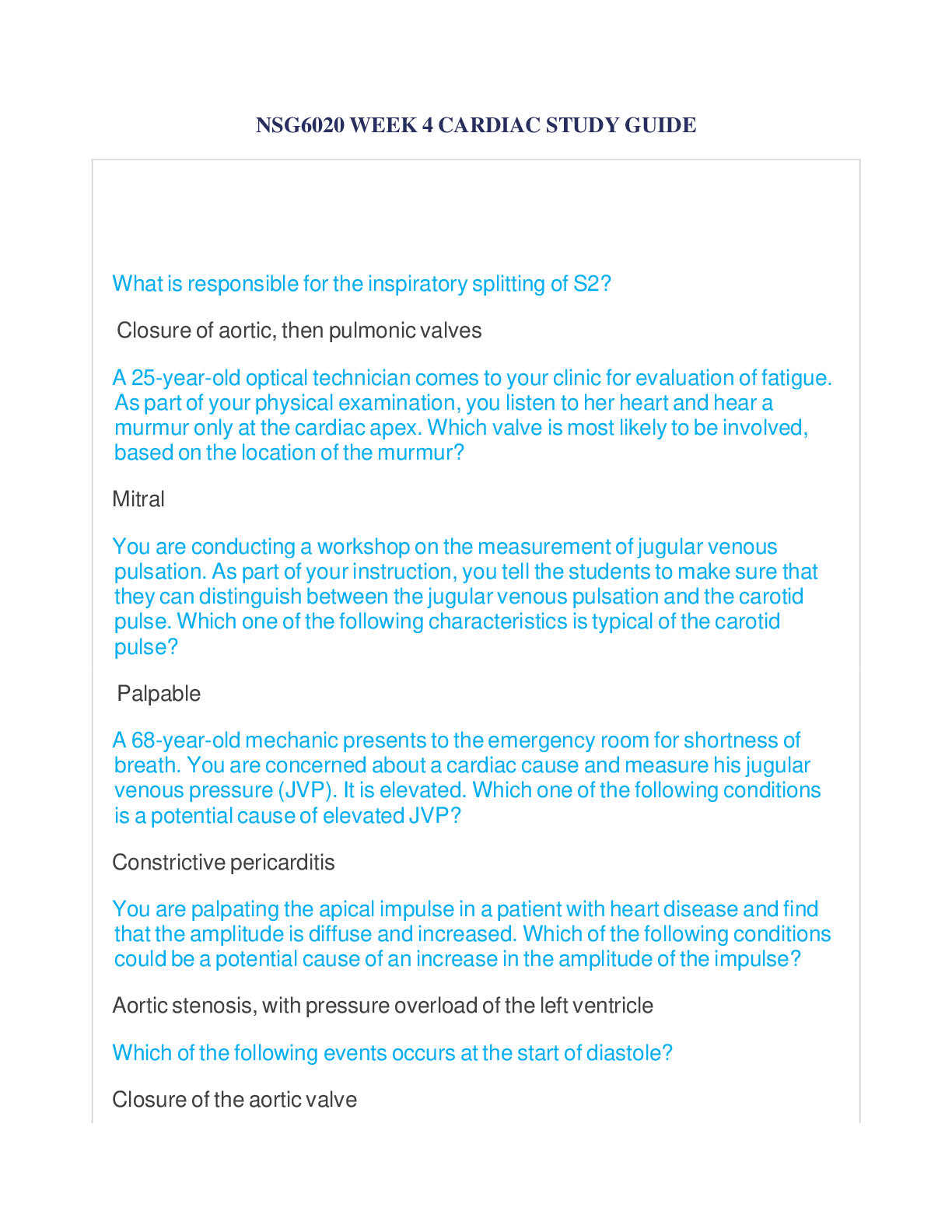


.png)

